#syrian Armenians
Text
when people say "use your privilege" they don't mean use your privilege of distance to not speak on situations.
I'm seeing so many blogs not talk about the current attempts of Palestinian genocide (probably because they want to "keep their blog aesthetic") and I'm seeing barely anyone talk about the world wide rise in antisemitism or the current Armenian genocide
But I guess all that means for you is that pretty soon you might have to pretend to care about another ethnic group being wiped out* - must be hard /s
*until it stops being trendy...
BLM
StopAsianhate
Missing And Murdered Indigenous Women
Stand With Ukraine
Yemen
Iraq
Syria
#free palestine#hamas is isis#antisemitism#nagorno karabakh#armenian genocide#israel#hamas massacre#alestinian genocide#gaza strip#ukraine#stand with ukraine#iraq war#iraq invasion#syria#yemen war#yemen#syrian refugees#palestinian genocide#antisemitsm tw
35 notes
·
View notes
Text

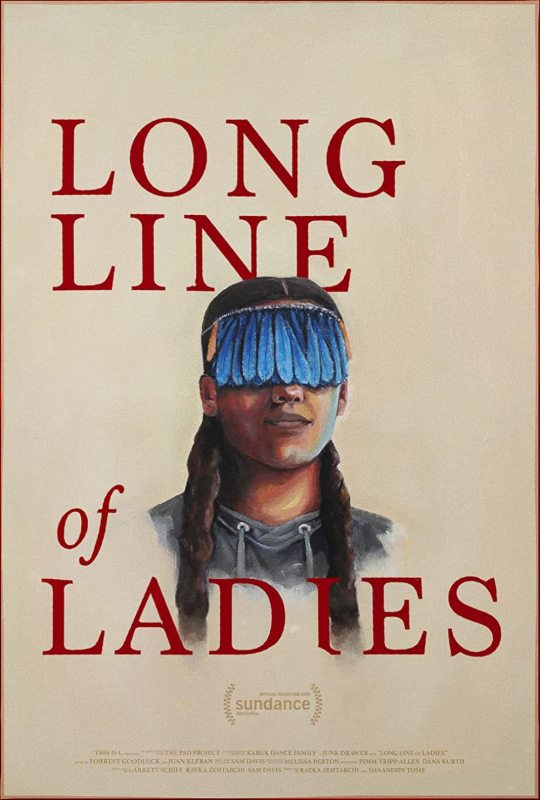

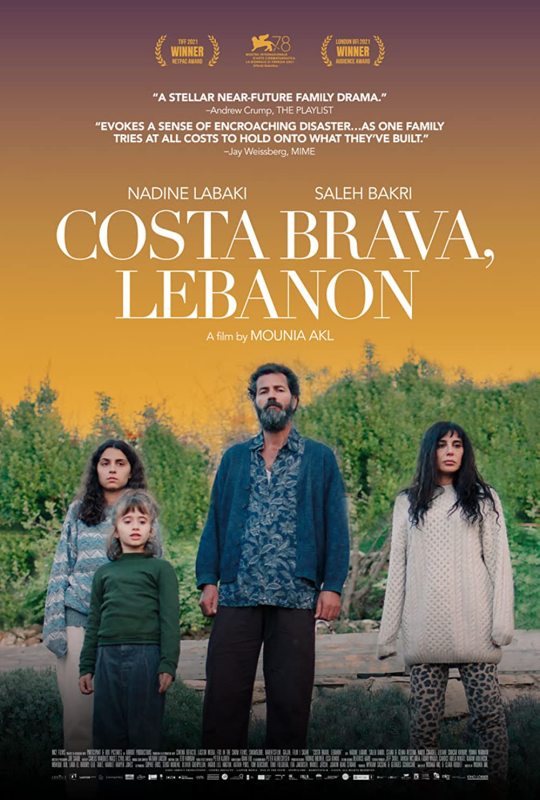



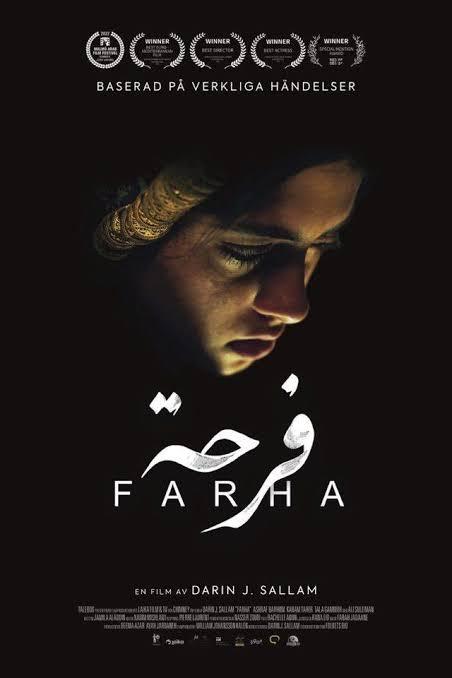
Some 2021-2022 Films by SWANA Women
Sirens (2022). Dir. Rita Baghdadi
Long Line of Ladies (2022). Dir. Rayka Zehtabchi & Shaandiin Tome
Aurora's Sunrise (2022). Dir. Inna Sahakyan
Costa Brava Lebanon (2021). Dir. Mounia Akl
The Swimmers (2022). Dir. Sally El Hosaini
The Blue Caftan (2022). Dir. Maryam Touzani
Orca (2021). Dir. Sahar Mosayebi
Farha (2021). Dir. Darin J. Sallam
#farha#sirens#the swimmers#the blue caftan#costa brava lebanon#aurora's sunrise#long Line of ladies#orca#Palestinian#iranian#lebanese#egyptian#Syrian#moroccan#armenian
139 notes
·
View notes
Text
Ik nothing about my armenian ancestry it makes me sad
2 notes
·
View notes
Text
Just leaving these articles here.
Feel free to reblog.
#dougie rambles#political crap#Syria#syrian civil war#north and east Syria#rojava#fuck Erdogan#assyria#bethnahrin#levant#leftism#anti fascism#anti imperialism#armenians#reblog this#reblog the shit out of this#war crimes#terrorism#genocide#Armenian diaspora#nubar ozanyan
5 notes
·
View notes
Quote
The institutions of the Syrian church in Jerusalem are limited in size and number, owing to the poor position of the church. They include a small monastic brotherhood centred in St Mark's convent headed by an archbishop and including three celibate priests and a nun. The Bethlehem community has a parish priest too. One religious court of first instance is composed of the archbishop and two priests. A court of appeal is situated in the patriarchal see in Damascus.
Daphne Tsimhoni, The Armenians and The Syrians
#palestinian christian#jerusalem#syrian church#arab christians#daphne tsimhoni#tsimhoni#1984#tsimhoni 1984#the armenians and the syrians#the armenians and the syrians: ethno-religious communities in jerusalem
4 notes
·
View notes
Video
youtube
#Christ is Risen#Orthodox Christianity#Christianity#orthodoxy#videos#chanting#Greek Language#Serbian language#Russian language#Georgian language#Romanian language#Albanian language#Arabic language#Armenian language#Ukrainian language#Syrian language
1 note
·
View note
Text
Facing The Facts: Resources on the Armenian Genocide

Frequently Asked Questions About Armenian Genocide
Sample Archival Documents on the Armenian Genocide: U.S. Archives
Sample Archival Documents on the Armenian Genocide: British Archives
Map of the 1915 Armenian Genocide in the Turkish Empire
Talaat Pasha's Official Orders Regarding the Armenian Massacres, March 1915-January 1916
The Massacre of the Armenians (”Ambassador Morgenthau describes the forced evacuation of one group of Armenians from their homeland to the Syrian desert.”)
American Documents
British Documents
Russian Documents
French Documents
Austrian Documents
Public Lectures
Eye Witnesses
The Turkish Woman
That is all right, but who killed hundred of thousands Armenians?
Einar af Wirsen
The Story of Anna Hedwig Bull, an Estonian Missionary of the Armenian Genocide.
"That's How It Was"
ARAB EYEWITNESS FAYEZ ALGHUSSEIN ABOUT THE ARMENIAN GENOCIDE
Report by an Eye-Witness, Lieutenant Sayied Ahmed Moukhtar Baas
Letters of Turkish doctors addressed to the Ministry of Internal Affairs of Turkey
Martyred Armenia: Eyewitness account of the Armenian genocide by Faiz El-Ghusein a Turkish official
PHOTO COLLECTION OF ARMENIAN GENOCIDE
#in case you'd like to break the chain of ignorance#history#armenian history#armenian genocide#literature#1915#world history#world war 1#april 24
2K notes
·
View notes
Text
the way people who live in peaceful cities far away from any of the ongoing conflicts now compare the suffering of the oppressed nations and have the audacity to say that one cause is "fashionable" while the other is not. I hope you all have to go through what both Ukrainians and Palestinians are going through, what Syrians and Armenians are experiencing. you have the emotional capacity to care about all of this because you are not a subject of fucking genocide, don’t you fucking dare use the "but" in this situation.
you are a privileged person, but neither the Palestinians nor Ukrainians, Syrians are. you can talk about russian war crimes in Ukraine or Syria and share the information about atrocities in Palestine, you can educate yourself and people around you on Karabakh conflict or Uyguhr genocide at the same time.
DONT COMPARE PEOPLE’S SUFFERING.
265 notes
·
View notes
Text
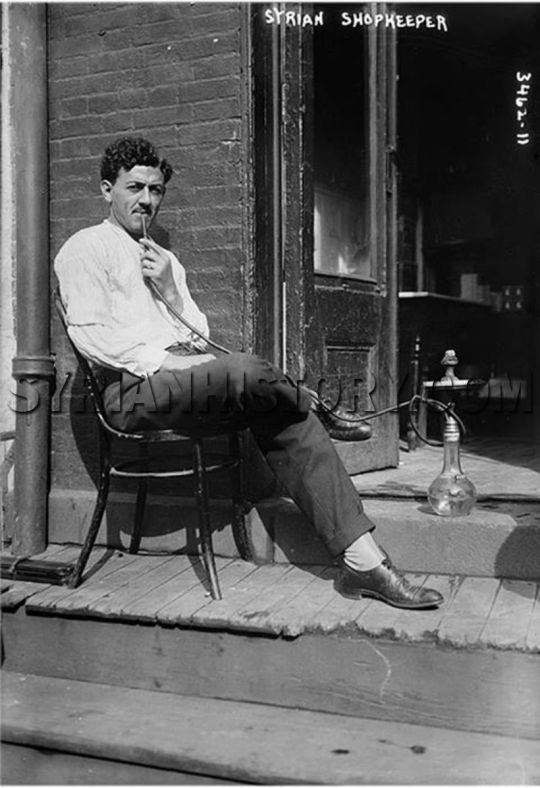
New York City, 1911. A Syrian immigrant with a hookah in front of his shop in the lower Manhattan neighborhood known as "Little Syria" (also called the Syrian Quarter, it was a vibrant enclave along Washington Street near the Battery where thousands of Syrians, Armenians, Greeks, and others from Middle Eastern and Mediterranean communities lived).
62 notes
·
View notes
Text
Shown in this 1824 edition of The Modern Traveler, #British journeymen repeatedly explored the Land of Israel (a/k/a Palestine) in the early 1800s where they always wrote of their observations of Jews.
Jews were mostly poor & mistreated, but they never abandoned their homeland.
Still other #Jews had been consistently returning (making Aliyah) to Israel for millennia since the end of the Jews’ Third Revolt against the Romans in 135 CE.
Though modern political #Zionism - the belief that Jews have a right to self-determination in at least part of their ancient homeland - did not go fully mainstream as the national liberation movement of the #Jewish people until Thedor Herzl’s Der Judenstaat in 1896, the yearning for & imagining of the Jewish future has always centered on the return of #Jewish sovereignty in Israel.
Every year on Passover for centuries, Jews said the words, “Next year in #Jerusalem!”
It has always been the Jewish dream.
And repeatedly saying this phrase every year, while also facing Jerusalem every time a Jew prayed, helped provide the conditions for the maintenance of a cohesive national Jewish identity that survived more than 1,800 of diaspora across the globe.
Books like The Modern Traveler always note the presence of Jews & other groups such as “Turks, Syrians, Bedouin #Arabs … #Latin, #Greek, and #Armenian #Christians, Copts, and Dru[ze].”
One people you will never find named, however, is anyone called “#Palestinians” or “#Palestinian Arabs.” That identity simply did not exist anywhere in the world at that time. In fact, the identity did not go mainstream among Arabs living in the Land of Israel until after the 1967 Six Day War.
As The Modern Traveler also notes, the vast majority of the #Arab population did not have roots in the Land & were instead “nomadic … [t]he true Arab is always an inhabitant of the desert” - a reference to the desert of the #Arabian Peninsula.
In fact, The Modern Traveler notes as many as 10,000 out of a population of ~20,000 people in Jerusalem were Jews (despite the fact that the Land’s far-away rulers from the #Turkish #Ottoman Empire did not technically permit more than 2,000 Jews to live in Jerusalem, this rule was not enforced at the time). Another 5,000 were #Muslims & 5,000 were Christians.
Zionism - despite being a word that has been severely misused by, and turned into some sort of insult by, anti-Israel groups seeking to ignore & remove the Jews' ancient & constant connection with the Land of Israel - is at the very essence of what it means, and has always meant, to be a #Jew.
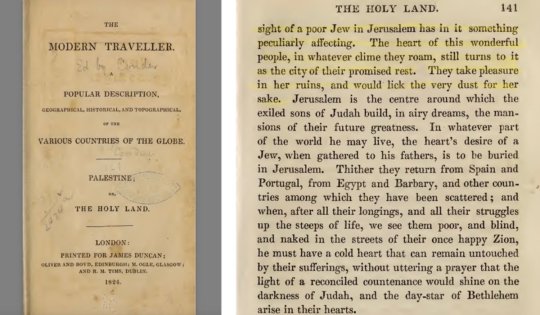
Captain Allen
@CptAllenHistory
55 notes
·
View notes
Text
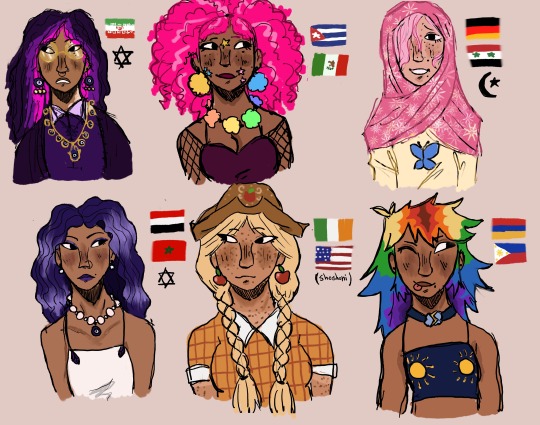
My mlp human designs :)
damn this took so fucking long
Oh btw if you wanna know the flags of the characters look under the cut :)
Twilight’s nationality is Iranian and she is ethnically Persian, Pinkie is Cuban and Mexican, Fluttershy is German and Syrian, Rarity is Yemeni and Moroccan, AppleJack is Native American and Irish, and Rainbowdash is Armenian and Filipina.
#mlp fanart#mlp pinkie#mlp humanized#mlp humans#mlp art#mlp redesign#friendship is magic#mlp applejack#mlp fluttershy#mlp rainbow dash#mlp rarity#mlp redraw#mlp headcanons#jewish artist#Fanart
29 notes
·
View notes
Text
Glad to see some others are at least calling out Azerbaijan for its bullshit.
Reblog the shit out of this.
#dougie rambles#political crap#news#Syria#Asia#middle east#levant#syrian civil war#hasakah#north and east Syria#rojava#Assyria#bethnahrin#armenia#armenians#Armenian diaspora#artsakh#azerbaijan#fuck azerbaijan#terrorism#war crimes#genocide#europe#caucasus#reblog this#reblog the shit out of this#turkey#fuck Erdogan#anti fascism#anti fascist
2 notes
·
View notes
Text
made a simple call script for calling congresspeople about the numerous genocides taking place worldwide currently, urging them to respond and call for intervention/ceasefire. feel free to use this, and if anyone has any advice for additions, please let me know. please do what you can, the people will be free.
Hello, my name is [name, optional], and I am a constituent of [congressperson]. I am calling about the numerous genocides happening worldwide. At this point in time, you are likely already aware of the genocide of Palestinian people, but there are many more genocides happening in the world, and the overlooking of such happenings, while innocents continue to suffer, must end.
Currently, Congolese, Armenian, Tigrayan, Yemeni, Guatemalan, Rohingya, Haitian, Native American, Kashmiri, Kurd, Sudanese, Ukrainian, Argentinian, Afghan, Moroccan, Libyan, Syrian, Lebanese, and many more people are experiencing genocide (or close risk of it, according to genocidewatch.com), ethnic cleansing, displacement, and the like. Also currently, the United States government continues to be not only complicit, but supportive of these attacks out of ignorance and selfish benefit.
In order to maintain current support, it is dire that you side with the people. Please do research on each and take a look into doing whatever possible to save the innocent people around the world from living a life of constant abuse and murder. Thank you for your time."
#keep eyes on sudan#keep eyes on congo#free palestine#free tigray#free yemen#free haiti#free kashmir#free armenia#free guatemala#free rohingya#native american rights#free congo#free sudan
38 notes
·
View notes
Text
This video made me homesick ?? 😢💓 As a Greek, my culture includes Orthodoxy since it's our ethnoreligion, and suddenly I feel that I have so much in common with so many people around the world!
I was also excited because some of the Christian communities shown here are ancient, and have persisted despite centuries-long prosecutions and pressures! (When talking about the "first" and the "ancient" Christianity we're talking about Orthodoxy or dogmas linked to Orthodoxy.)
I'm referring to the era before the Western European colonization. It was when people came to it freely and what we today call "Catholicism" wasn't what they came into. The Christians in these areas were culturally linked more to the Eastern Roman Empire (Byzantium) and to the Orthodox creed.
Christianity's home is the Middle East. Starting from Jerusalem, it spread to the whole Levant region. Assyrian, Lebanese, Syrian, Jordanian, and Armenian people came to Christianity in large numbers from the 1st century already. Antioch has been a stronghold of Christianity, and a producer of the brightest Orthodox minds.
The West Arabian Peninsula (Hejaz region) held the majority of Christian Arabs. Christians lived around Mecca and Yathrib before the advent of Islam. One of the earliest Christian church buildings ever, known as Jubail Church, is located in Saudi Arabia and it was built around the 4th century.
Christianity in Africa first arrived in Egypt in approximately 50 AD. By the end of the 2nd century it had reached the region around Carthage. In the 4th century, it arrived to modern-day Ethiopia and Eritrea (the Aksumite empire), and the region was one of the first in the world to adopt Christianity as its official religion. The Nubian kingdoms of Nobatia, Makuria and Alodia followed two centuries later. From the late 5th and early 6th century, the region included several Christian Berber kingdoms.
This is the chant, in Arabic (with subs in many languages). There's a Greek version too but on youtube I only found the singing version (lit. "ψαλτοτράγουδο"):
youtube
youtube
#Feel free to search for more denominations in the aforementioned regions bc there's not enough room here to get into the hundreds of details#about each community#And it goes without saying that there are all sorts of Christians in these regions today#not just orthodoxes#orthodoxy#religion#tradition#arabic#christian arabs
44 notes
·
View notes
Text
Was Turkey and its predecessor, the Ottoman Empire, always the land of [sedentary villages and commercial agriculture]? [...] What kind of historical processes generated this socioeconomic, political, and environmental transformation in the Ottoman Empire and the Republic of Turkey? [...] Gratien [...] [narrates] a hundred-year-long (1850s-1950s) clandestine history of state-led “agrarian conquest,” villagization, and commercialization of agriculture in the muddy but fertile lowland of Çukurova (historical Cilicia) and its mountainous hinterland in southern Anatolia. [...]
The frontier in Çukurova, Gratien argues, was a “frontier of the state,” “a settlement frontier,” and an “ecological frontier.” [...] [T]he Ottoman state and its varied practices of governmentality played an engineering role in remaking the rural world, while [...] forced sedentarization (iskan in Turkish) policies were imposed on the region’s pastoralists [...] whose livelihood depended on seasonal migration between the lowlands and highlands. [...] [A] mesh of old and new [...] “[...] forms of resource extraction, and environmental understandings” appeared “in tandem with the processes of state-building [...] and commercialization.” [...]
The mobility of people connected the lowland to the highland pastures, pastoralists to livestock, migrant laborers to cotton, merchants to global capitalism, Muslim refugees to trans-imperial warfare, mosquitos to dreadful malaria, the “rebels” to the mountains, and finally technocrats to the swampy Çukurova.
---
Transhumance migration, referring to seasonal migration between northern and southern pastures, is the first and perhaps one of the most common forms of mobility embedded in this region. [...] The fresh upland air, known as yayla in Turkish, was a green sanctuary for locals [...] during the hot summer months.
During the mid-nineteenth century, the dynamic of this seasonal relationship to lowland swamps shifted with the imposition of Ottoman modernist reform policies intended to turn Çukurova into a “second Egypt” through cotton production. As a result of provincial reforms and the growing centralization capacity of the empire thanks to the Tanzimat reforms (1839-76), the Ottoman state began to forcefully settle the local pastoralist communities that were seen as obstacles to state-led agricultural development projects in the region and as a potential labor reserve for the cultivation of cotton on the “fertile lands” of Cilicia.[5] Ottoman reformists viewed “settlement and cultivation” as “the only antitode of the malarial wastelands of the Ottoman countryside” (p. 58). Gratien chronicles widespread “malaria, cholera, and other diseases” as outcomes of resettlement and villagization and argues that from the 1850s onward these [...] resulted in "high mortality" [...].
---
Though the Ottomans’ forced sedentarization policy toward pastoralists and resettlement [programs] [...] were both designed to increase the commercialization of agriculture in Çukurova, they operated differently as instruments of the imperial state. Sedentarization included state-perpetrated violence in the form of massive military campaigns. Resettlement of refugees involved the strategic settlement of new loyal citizens among indigenous communities of the region whose own loyalty to the empire was seen as suspicious. [...] During the early twentieth century, [...] hundreds of thousands of Armenians were killed during the Adana massacre in 1909 and then the Armenian genocide in 1915. With the deportation of hundreds of thousands of Armenians from their historical homelands into Syrian deserts for “putative security concerns,” Çukurova’s fertile lands, villages, and towns in Adana province were instead “permanently settled” with [...] [those] who were identified as “Turks” by the nationalist government (p. 143). This was the second wave of an Ottoman demographic engineering project that started in the 1860s [...] in a region once heavily inhabited by Ottoman Armenians and Muslim pastoralists. [...]
---
Gratien carefully investigates state-led violence against pastoralists instrumentalized by the massive military campaigns of the Fırka-i Islahiye (Reform Division). [...] By consistently incorporating folk songs, laments, and oral accounts, Gratien not only eloquently displays pastoralists’ forms of resistance and resilience against the Ottoman reform movement in Çukurova but also masterfully narrates perceptions and worldviews that have been silenced in the state archive. [...]
---
Text by: Zozan Pehlivan. "Review of Gratien, Chris. The Unsettled Plain: An Environmental History of the Late Ottoman Frontier". H-Environment, H-Net Reviews. August 2023. URL: h-net.org/reviews/showrev.php?id=58142. [Bold emphasis and some paragraph breaks/contractions added by me.]
34 notes
·
View notes
Text
People online: Zionism is colonialism!! Stop eraseing the natives!
Genetic studies: umm. Well, actually -
I'm not biologist! But I try to explain this in simpler words. Feel free to correct me if I misunderstood anything :)
(can't believe I spent about 4 hours on it)
In short - the study compared the Y genes of several different groups - aka the paternal genetic history (father-to-son).
Finding more similarities= genetically closer= has a more common ancestry.
(like, brother is closer then cousin closer then a stranger)
Let's start!
"The investigation of the genetic relationship among three Jewish communities revealed that Kurdish and Sephardic Jews were indistinguishable from one another, whereas both differed slightly, yet significantly, from Ashkenazi Jews. The differences among Ashkenazim may be a result of low-level gene flow from European populations and/or genetic drift during isolation."
AKA: genetically speaking, there's no difference between Jews from various MENA countries (Mizrahim). (Sephardic were mostly Moroccan origins, Kurdish sample mostly north Iraq/Syrian origins)
An important note: Eda refers to the spesific traditions/subgroup, and passed down by the paternal line (father-to-son). This is in order to preserve traditional practices, that were different in different communities (e1)
There's a small genetic difference between Mizrahi jews and Ashkenazi Jews. This could be due to isolation or "low level gene flow" (in other words, converts and (mostly) children born from rape. Which was... way more common then you think. Look up "Pogrom".)
Next!
In a report published elsewhere, we recently showed that Jews and Palestinian Arabs share a large portion of their Y chromosomes, suggesting a common ancestry (Nebel et al. 2000). Surprisingly, in the present study, Jews were found to be even closer to populations in the northern part of the Middle East than to several Arab populations. It is worth mentioning that, on the basis of protein polymorphisms, most Jewish populations cluster very closely with Iraqis (Livshits et al. 1991) and that the latter, in turn, cluster very closely with Kurds (Cavalli-Sforza et al. 1994). These findings are consistent with known cultural links that existed among populations in the Fertile Crescent in early history.
Here, the mention earlier studies about genetic links between Jews (of all Edot) and Palestinian arabs. This can mean there's a common ancestry to the population (same grand-grand-etc.-father).
Jews are geneticly similar to Iranians, who are geneticly similar to Kurds (e2)
Those genetic links aren't suprising, and consistent with what we know from history about population and communities in the Fertile Crescent area.
Muslim Kurds
The Kurds are considered an ancient autochthonous population (Kinnane 1970; Pelletiere 1984) who may even be the descendants of the shepherds who first populated the highlands during the Neolithic period (Comas et al. 2000). Although Kurdistan came under the successive dominion of various conquerors, including the Armenians, Romans, Byzantines, Arabs, Ottoman Turks, and Iraqis (Kinnane 1970), they may be the only western Asian group that remained relatively unmixed by the influx of invaders, because of their protected and inhospitable mountainous homeland (Pelletiere 1984). The Y chromosome variation of Muslim Kurds falls within the spectrum observed in other populations (Turks and Armenians) living in the same region. The three populations are closer to Jews and Arabs than to Europeans. This is in good agreement with data on classical markers (Cavalli-Sforza et al. 1994). However, on the basis of mtDNA polymorphisms, Kurds were reported to be more closely related to Europeans than to Middle Easterners (Comas et al. 2000).
Kurds are very ancient ethnic group. Possibly the only western-asian group that remained relatively unmixed, despite (pointing history).
Kurds Y chromosomes are pretty similar to those in the same area (Turks and Armenians), and those three groups Y chromosomes are more similar to Jews and Arabs then to Europeans.
Now, that's interesting: the similarities is also in classical markers, but it's different from studies on mtDNA (Maternal/mother line), which then shows more similar to Europeans than Arabs and Jews.
(idk if there are rumours/historical kurds stories/traditions about Patriarch communities with brides from distance? Or Matriarch communities with grooms from the (other) distance? But it sounds like the historical story is something like that.
Palestinian Arabs and Bedouin
Bedouin are largely nomadic Arab herders, with a tribal organization. They live in all Arab countries, constituting about one tenth of the population (Cavalli-Sforza et al. 1994). The Bedouin population of the Negev desert was found to be most distant from Jews and Muslim Kurds and to be closely related only to Palestinians. Both these Arab populations differ from the other Middle Eastern groups sampled for the present study, mainly in having a higher frequency of Eu 10 chromosomes, the majority of which they share with each other. Traditional marriage practices—such as male polygamy, a high rate of consanguineous marriages, and patrilocality—may have enhanced the low haplogroup and haplotype diversity of the Negev Bedouin, as was suggested elsewhere for the Bedouin tribes in the Sinai Peninsula (Salem et al. 1996).
Bedouins from the Negev (Southern Israel) were most different from Jews and Muslim-kurds, and closely related to Palestinian Arabs. Both Arab groups were(geneticly) very similar to eachother, but different from the other Middle Eastern groups in the study.
The main difference was a higher frequency of Eu 10 chromosomes, that were similar in the 2 groups.
We propose that the Y chromosomes in Palestinian Arabs and Bedouin represent, to a large extent, early lineages derived from the Neolithic inhabitants of the area and additional lineages from more-recent population movements. The early lineages are part of the common chromosome pool shared with Jews (Nebel et al. 2000). According to our working model, the more-recent migrations were mostly from the Arabian Peninsula, as is seen in the Arab-specific Eu 10 chromosomes that include the modal haplotypes observed in Palestinians and Bedouin. These haplotypes and their one-step microsatellite neighbors constitute a substantial portion of the total Palestinian (29%) and Bedouin (37.5%) Y chromosome pools and were not found in any of the non-Arab populations in the present study. The peripheral position of the modal haplotypes, with few links in the network (fig. 5), suggests that the Arab-specific chromosomes are a result of recent gene flow. Historical records describe tribal migrations from Arabia to the southern Levant in the Byzantine period, migrations that reached their climax with the Muslim conquest 633–640 a.d.; Patrich 1995). Indeed, Arab-specific haplotypes have been observed at significant frequencies in Muslim Arabs from Sena (56%) and the Hadramaut (16%) in the Yemen (Thomas et al. 2000). Thus, although Y chromosome data of Arabian populations are limited, it seems very likely that populations from the Arabian Peninsula were the source of these chromosomes. The genetic closeness, in classical protein markers, of Bedouin to Yemenis and Saudis (Cavalli-Sforza et al. 1994) supports an Arabian origin of the Bedouin. The alternative explanation for the distribution of the Arab-specific haplotypes (i.e., random genetic drift) is unlikely. It is difficult to imagine that the different populations in the Yemen and the southern Levant, in which Arab-specific chromosomes have been detected at moderate-to-high frequencies, would have drifted in the same direction.
The eu10 Y chromosomes geneticly linked to the arab peninsula, and wasn't found in non-arab population. It's very possible that arab-Palestinians and Bedouins are the descendants of immigrants and population movement, possibly during the Caliphate - the Muslim Empire (Arab dynasties 632-1258; Mamluk Sultanate 1250-1517; ottoman/turkish 1517-1924) (e2)
Example and more information undercut:
Eda (plural - Edot): community, subgroup. Usually refers to a group using different Minhagim (traditions).
For example, my Yemeni ancestors only said the "Hamotzi" prayer (said before eating bread) during Passover, as wheat was rare and expensive, and wasn't a usual part of their diet.
Another differences include Te'amim (ways to read the Torah. Sort of like 🎶 for voice); Kitniyot (o lo lithiyot/jk) - do you eat it on passover? What about the oil?; certain holidays (traditional Mimuna, Sigd.) (Yat kislev🙈)
Through history, even though most Jewish communities weren't completely isolated from one another, it still took a lot of time to pass questions and information. So different places gained different traditions.
Basically, it goes "(go by) paternal traditions" (מנהג אבות)
In the past, people that moved from one community to another would take over the new traditions.
Since moving and immigration became far more common, and started to move as communities, people kept their traditions. For example, in my area I have 5 small synagogues, each was founded by a community from different diaspora that wanted to keep their traditions.
And it's okay! It's even great 😸
(e2) kurds:
Oh look, another ethnic group fighting for freedom and right for self government.
Population: about 30m ppl worldwide. In current geography, the land split between Iraq, Syria and Turkey. Also fighting ISIS. Look up YPJ.
#genetic studies#israel#palestine#genetics#genetic screening#kurdistan#kurds#muslim#jews#arab#arab peninsula#Palestinians#Bedouin#biology#history#fascinating#iraq#syria#turkey#YPJ#ncbi#peer review#science#biology study
16 notes
·
View notes